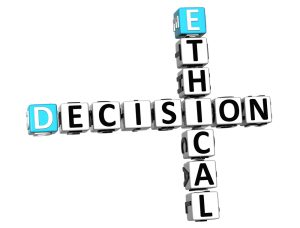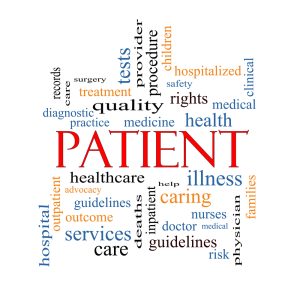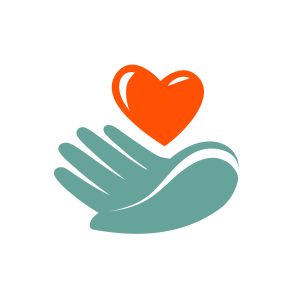By – James M. Katz, BA
In the realm of healthcare ethics, non-maleficence stands as a cornerstone principle, guiding healthcare professionals in their duty to avoid causing harm to patients. This fundamental concept, deeply rooted in medical ethics and nursing ethics, plays a crucial role in shaping patient care and decision-making processes. Non-maleficence, often paired with beneficence, forms the foundation of the Code of Ethics that healthcare providers adhere to, ensuring patient rights are protected and ethical dilemmas are navigated with care and consideration.
Making tough choices is a big part of health care. Doctors and nurses often face hard decisions that aren’t just about medicine but also about what’s right and wrong. Health care ethics help guide these decisions to make sure patients are treated fairly and with respect. As medical technology improves and patient groups become more diverse, having clear ethical rules is more important than ever.
Understanding non-maleficence is essential for healthcare professionals to provide patient-centered care effectively. This principle has an impact on various aspects of medical practice, from daily patient interactions to complex medical research scenarios. As healthcare continues to evolve, the application of non-maleficence faces new challenges, particularly in balancing potential benefits against risks in treatment decisions. This article delves into the meaning of non-maleficence in nursing and medicine, explores its relationship with other ethical principles, and examines its practical implications in clinical settings and beyond.
Key Takeaways
- Health care ethics guide tough choices in medicine, ensuring fair and respectful treatment of patients.
- Doctors and nurses often face ethical dilemmas, like balancing patient wishes with medical advice.
- Cultural and religious beliefs can impact medical decisions, requiring sensitivity and understanding.
- Fairness in health care means making tough decisions about how to use limited resources like organs and medicines.
- Ethics committees and training help health care workers make better decisions in difficult situations.
Definition of non-maleficence
Origin of the term
Non-maleficence, a fundamental principle in healthcare ethics, has its roots in ancient medical traditions. The term derives from the Latin phrase “primum non nocere,” which translates to “first, do no harm”. This maxim has been a guiding principle for medical professionals for centuries, emphasizing the paramount importance of avoiding harm to patients in all aspects of care.
Core principles
At its core, non-maleficence obliges healthcare providers not to inflict harm on their patients. This principle supports several moral rules that form the backbone of ethical medical practice. These include refraining from killing, causing pain or suffering, incapacitating, offending, or depriving others of the goods of life. The concept of non-maleficence goes beyond simply avoiding direct harm; it also involves carefully weighing the potential benefits and risks of all interventions and treatments.
Non-maleficence serves as a threshold for treatment decisions. If a treatment is likely to cause more harm than good, it should not be considered. This principle directs medical professionals to evaluate the potential risks and burdens of their actions on patients, choosing the best course of action that minimizes harm while maximizing benefits.
In practice, non-maleficence requires healthcare providers to:
1. Assess the potential risks and benefits of all interventions
2. Avoid treatments that are inappropriately burdensome
3. Choose the best course of action for the patient’s well-being
This principle is particularly crucial in challenging scenarios, such as end-of-life care decisions, where healthcare providers must carefully consider the implications of withholding or withdrawing life-sustaining treatment, administering nutrition and hydration, and managing pain and other symptoms.
Relation to the Hippocratic Oath
The principle of non-maleficence is closely tied to the Hippocratic Oath, one of the oldest binding documents in history. The Oath obliges physicians, based on their ability and judgment, to benefit the patient (the principle of beneficence) and not to harm them (the principle of non-maleficence). This dual obligation has been a cornerstone of medical ethics since ancient times.
It’s important to note that the Hippocratic Oath is subjective, relying on the physician’s judgment even if colleagues disagree. The Oath implies that physicians have the experience and expertise to make decisions on behalf of patients, even when their judgment conflicts with the patient’s wishes. This aspect of the Oath has been a subject of debate in modern medical ethics, as it raises questions about patient autonomy and shared decision-making.
While non-maleficence and beneficence are closely related, they differ in important ways. Non-maleficence acts as a constant in clinical practice, serving as a baseline ethical requirement for all medical actions. Beneficence, on the other hand, is often applied in response to specific situations, such as determining the best treatment for a patient.
In public health and medical research, the principle of non-maleficence is interpreted through a utilitarian lens. Any intervention or study must result in more good than harm on a population basis. This application of the principle is supported by rigorous risk-benefit analyzes, often based on animal studies or toxicological research.
The obligation of non-maleficence extends beyond individual healthcare providers to encompass broader public health concerns, such as product safety. Manufacturers have a duty to take precautions and conduct adequate product testing to ensure safety, thereby upholding the principle of doing no harm.
The Importance of Non-Maleficence in Healthcare
Non-maleficence, a fundamental principle in healthcare ethics, plays a crucial role in shaping the practice of medicine and nursing. This principle, which stems from the Latin phrase “primum non nocere” meaning “first, do no harm,” serves as a cornerstone for ethical decision-making and patient care . The importance of non-maleficence in healthcare cannot be overstated, as it has an impact on various aspects of medical practice, from daily patient interactions to complex treatment decisions.
Patient Safety
At its core, non-maleficence is about ensuring patient safety. Healthcare professionals have a duty to refrain from maltreatment, minimize harm, and promote good towards patients. This obligation extends to all aspects of patient care, including the administration of medications, performing procedures, and providing medical advice.
The principle of non-maleficence requires healthcare providers to carefully weigh the benefits against the burdens of all interventions and treatments. This assessment is particularly crucial in challenging scenarios, such as end-of-life care decisions, where healthcare professionals must consider the implications of withholding or withdrawing life-sustaining treatment, administering nutrition and hydration, and managing pain and other symptoms.
In nursing practice, non-maleficence translates to the provision of safe, effective, and high-quality care. Examples include holding a medication due to adverse reactions or taking steps to ensure a safe work environment. By prioritizing patient safety, healthcare professionals can minimize the risk of harm and improve overall patient outcomes.
Trust in Healthcare Professionals
Non-maleficence plays a vital role in building and maintaining trust between patients and healthcare providers. The Illinois Supreme Court has stated that the physician-patient relationship is founded on the understanding that physicians possess specialized knowledge and skills that patients typically lack. This knowledge disparity places a significant responsibility on healthcare professionals to act in the best interests of their patients.
By adhering to the principle of non-maleficence, healthcare providers demonstrate their commitment to protecting patients from harm. This commitment helps to foster trust and confidence in the healthcare system, which is essential for effective patient care and positive health outcomes.
The trust placed in healthcare professionals by individuals and society is not to be taken lightly. It forms the basis of the therapeutic relationship and allows patients to feel safe and secure when seeking medical care. When healthcare providers consistently prioritize non-maleficence in their practice, they reinforce this trust and strengthen the overall healthcare system.
Ethical Decision-Making
Non-maleficence serves as a guiding principle in ethical decision-making within healthcare. It acts as a threshold for treatment decisions, ensuring that interventions that cause more harm than good are not considered. This principle supports several moral rules, including refraining from killing, causing pain or suffering, incapacitating, offending, or depriving others of the goods of life.
In practice, non-maleficence requires healthcare providers to:
1. Assess the potential risks and benefits of all interventions
2. Avoid treatments that are inappropriately burdensome
3. Choose the best course of action for the patient’s well-being
The principle of non-maleficence is particularly important in situations where healthcare providers face conflicting ethical obligations. For example, in cases where life support is stopped or patients have chosen to stop taking life-saving medication, healthcare professionals are put in a morally challenging position. In such scenarios, non-maleficence guides decision-making by emphasizing the importance of minimizing harm and respecting patient autonomy.
It’s important to note that non-maleficence differs from beneficence in two key ways. First, it acts as a threshold for treatment, whereas beneficence involves considering all valid treatment options and ranking them in order of preference. Second, non-maleficence is a constant in clinical practice, while beneficence is often applied in response to specific situations.
By emphasizing ethical principles such as non-maleficence in healthcare, professionals can increase their decision-making confidence across various practice settings. This foundation in ethics helps ensure that decisions made are in the best interest of patients, even when faced with complex or challenging situations.
Non-Maleficence vs. Beneficence
Key differences
Non-maleficence and beneficence are two closely related ethical principles that play a crucial role in healthcare decision-making. While both principles aim to ensure the well-being of patients, they have distinct focuses and applications. Non-maleficence, derived from the Latin phrase “primum non nocere” meaning “first, do no harm,” is the obligation of healthcare professionals to avoid causing harm to patients. This principle supports several moral rules, including refraining from killing, causing pain or suffering, incapacitating, offending, or depriving others of the goods of life. In practice, non-maleficence requires healthcare providers to carefully weigh the benefits against the burdens of all interventions and treatments, avoiding those that are inappropriately burdensome.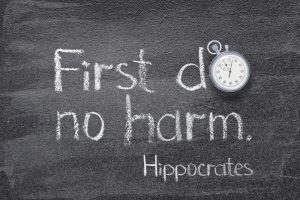
Beneficence, on the other hand, is the obligation to act for the benefit of the patient and supports moral rules to protect and defend the rights of others, prevent harm, remove conditions that will cause harm, help persons with disabilities, and rescue persons in danger. Unlike non-maleficence, beneficence involves positive requirements and calls for not just avoiding harm but also actively promoting patients’ welfare.
Balancing the two principles
While non-maleficence and beneficence are distinct principles, they often work together in healthcare settings. In most cases, these principles are considered in tandem, as non-maleficence prevents harming the patient while beneficence seeks to improve people’s well-being and health. However, the duty of non-maleficence is generally considered a stronger commitment in healthcare.
Balancing these principles can be challenging, especially when they conflict with other ethical considerations, such as patient autonomy. When faced with such conflicts, healthcare professionals must determine the actual obligation to the patient by examining the respective weights of the competing principles based on both content and context.
In some situations, the principle of beneficence may override non-maleficence. For example, in the case of a patient in shock treated with urgent fluid-resuscitation and the placement of an indwelling intravenous catheter, the pain and swelling caused by the intervention are outweighed by the potential life-saving benefits.
Practical examples
The application of non-maleficence and beneficence in healthcare can be observed in various scenarios:
1. Truth-telling: Nurses must balance the principle of beneficence with patient autonomy when communicating with patients. This involves combining the patient’s right to know with the potential benefits or harms of disclosure.
2. Treatment decisions: When considering a potentially life-saving intervention, such as instituting mechanical ventilation, or a request to withdraw life support, healthcare professionals must carefully weigh the principles of beneficence, non-maleficence, and patient autonomy.
3. Equitable care: The principle of beneficence requires healthcare providers to offer equitable care based on need and without discrimination for all patients.
4. Medication management: Non-maleficence in medicine includes stopping a destructive drug or rejecting a treatment that has not been proven effective.
5. Long-term care: Practical nurses demonstrate beneficence by providing care to patients in long-term care facilities; while also ensuring they do not cause harm.
It’s important to note that sometimes, actions intended to be beneficent may not always benefit patients and may conflict with preserving the ethical principle of autonomy. In such cases, healthcare professionals may experience cognitive dissonance, a phenomenon that defines the mental tension arising when conflicting attitudes are held or when behaviors are incompatible with certain attitudes.
To navigate these complex ethical situations, healthcare professionals must strive to find a balance between beneficence, non-maleficence, and other ethical principles. This balance is essential for providing high-quality, patient-centered care while maintaining the trust and respect of patients and society at large.
Resource Allocation and Fairness in Health Care
Ethical Considerations in Organ Transplantation
One of the toughest ethical issues in health care is deciding who gets an organ transplant. With so many people needing organs and not enough donors, doctors have to make hard choices. Is it fair to give an organ to someone who might not live as long as another person? These decisions are never easy and often leave families and doctors feeling conflicted.
Allocating Limited Medical Resources
When there aren’t enough medical supplies, like medications or hospital beds, doctors have to decide who gets them first. This can be especially hard during emergencies, like a pandemic. How do you choose who gets life-saving treatment when there isn’t enough for everyone? These choices can weigh heavily on health care workers, who want to help everyone but can’t.
Addressing Health Care Accessibility
Even though many people have health insurance, not everyone can afford the care they need. This raises big questions about fairness. Is it right to deny someone treatment because they can’t pay? This issue is not just about health care but also about what kind of society we want to live in. It’s a debate that has been going on for a long time and doesn’t seem to have an easy answer.
The Role of Ethics Committees and Consultation Services
Functions of Hospital Ethics Committees
Hospital ethics committees play a crucial role in guiding healthcare professionals through complex moral dilemmas. These committees are made up of diverse members, including doctors, nurses, social workers, and legal advisors. They provide a platform for discussing and resolving ethical issues that arise in patient care. Their primary goal is to ensure that patient rights and well-being are prioritized. By offering a structured environment for ethical deliberation, these committees help healthcare providers make informed and compassionate decisions.
Case Studies in Ethical Consultation
Ethical consultation services often deal with real-life scenarios that test the moral compass of healthcare providers. For instance, a case might involve a patient who refuses life-saving treatment due to personal beliefs. In such situations, ethics committees’ step in to mediate and find a balanced solution that respects the patient’s autonomy while considering the medical implications. These case studies highlight the importance of ethical consultation in navigating the gray areas of medical practice.
Training Health Care Professionals in Ethical Decision Making
Training healthcare professionals in ethical decision-making is essential for maintaining high standards of patient care. Educational programs and workshops are designed to equip medical staff with the tools they need to handle ethical dilemmas effectively. By fostering a culture of ethical awareness, healthcare institutions can better prepare their staff to face the challenges of modern medicine. This training not only enhances the quality of care but also builds trust between patients and healthcare providers.
Applying Non-Maleficence in Clinical Practice
Risk Assessment
In clinical practice, applying the principle of non-maleficence requires healthcare professionals to carefully assess the risks associated with medical interventions. This assessment involves weighing the potential benefits against the burdens of all treatments and procedures. The goal is to minimize harm to patients while providing effective care. Healthcare providers must consider various factors, including the patient’s condition, potential complications, and alternative treatment options.
One of the key challenges in risk assessment is the prevalence of medical errors. Studies have shown that medical errors are a serious public health problem, with one report estimating that approximately 400,000 hospitalized patients experience some preventable harm each year. Another study suggested that over 200,000 patient deaths annually were due to preventable medical errors. These statistics highlight the critical importance of thorough risk assessment in clinical practice.
To address these issues, healthcare institutions have implemented various strategies and tools for quality improvement. These include failure modes and effects analysis (FMEA), Plan-Do-Study-Act cycles, Six Sigma, Lean methodologies, and root-cause analysis. These approaches help identify potential errors, assess their impact, and develop preventive measures to enhance patient safety.
Informed Consent
Informed consent is a cornerstone of ethical medical practice and plays a crucial role in upholding the principle of non-maleficence. It involves providing patients with sufficient information about the proposed treatment, its risks, and alternatives, allowing them to make autonomous decisions about their care. The process of obtaining informed consent serves to protect patients from unwanted interventions and ensures that their rights and preferences are respected.
However, the concept of informed consent is complex and multifaceted. It goes beyond simply obtaining a signature on a form. Healthcare providers must ensure that patients have a genuine understanding of the information provided and are free from coercion or undue influence. This requires effective communication and a supportive environment that encourages patients to ask questions and express concerns.
In the context of non-maleficence, informed consent serves as a safeguard against unnecessary harm. By involving patients in the decision-making process, healthcare providers can better align treatment plans with individual values and preferences, potentially reducing the risk of adverse outcomes.
Minimizing Harm
Minimizing harm is at the core of non-maleficence in clinical practice. Healthcare professionals must strive to reduce the risk of adverse events and complications associated with medical interventions. This involves implementing evidence-based practices, adhering to safety protocols, and maintaining a high level of clinical competence.
One approach to minimizing harm is through the use of quality improvement techniques. For example, root cause analysis (RCA) is a method used to identify the underlying causes of adverse events and develop strategies to prevent their recurrence. The Joint Commission requires healthcare organizations to perform RCA in response to sentinel events and implement action plans based on the findings.
Another important aspect of minimizing harm is recognizing and addressing near-miss events. These are incidents that could have resulted in patient harm but were caught before causing injury. By analyzing near-miss events, healthcare providers can identify potential system weaknesses and implement preventive measures.
Effective communication among healthcare team members is also crucial in minimizing harm. Clear and timely communication can help prevent errors related to medication administration, patient handoffs, and coordination of care. Additionally, fostering a culture of safety that encourages reporting of errors and near-misses without fear of punishment can lead to improved patient outcomes and reduced harm.
In conclusion, applying non-maleficence in clinical practice requires a multifaceted approach that encompasses risk assessment, informed consent, and continuous efforts to minimize harm. By integrating these principles into daily practice, healthcare professionals can work towards providing safer, more effective care for their patients.
Challenges in Upholding Non-Maleficence
Resource limitations
One of the primary challenges in upholding non-maleficence in healthcare is the allocation of limited resources, particularly during global health emergencies. The scarcity of resources can force healthcare providers to make difficult decisions that may compromise the principle of “do no harm” for individual patients. During pandemics, the focus shifts from individual patient care to the well-being of the larger affected society. This shift can create ethical dilemmas for healthcare professionals who are trained to provide the best possible care for each patient.
The allocation of limited resources, such as ventilators during a pandemic, directly addresses the challenging question: “Who shall live when not everyone can live?” This situation requires healthcare providers to adapt to altered circumstances, potentially focusing on the well-being of many patients rather than solely on individual patients. The fair and impartial distribution of critical care resources during a pandemic is governed by values that are not typically considered in adequately resourced environments.
Conflicting obligations
Healthcare professionals often face conflicting obligations when trying to uphold the principle of non-maleficence. The ethical foundation in medicine rests upon a set of fundamental principles, including beneficence, justice, autonomy, and non-maleficence. However, these principles can sometimes conflict with one another, creating ethical dilemmas for healthcare providers.
For instance, the principle of beneficence may sometimes conflict with patient autonomy. In such cases, healthcare providers must carefully weigh the benefits against the burdens of all interventions and treatments. This balancing act becomes particularly challenging in end-of-life care decisions, where withholding or withdrawing life-sustaining treatment must be considered.
Another conflict arises when the obligation to provide the best possible medical care clashes with resource limitations. The technological imperative in healthcare, which refers to the perceived inevitability and essential nature of new technology, can lead to inappropriate uptake of advanced technologies. This can potentially violate the principle of patient autonomy if technology is used as a means to prevent death at all costs.
Technological advancements
While technological advancements in healthcare offer significant opportunities to improve patient outcomes, they also present challenges in upholding non-maleficence. The rapid evolution of artificial intelligence (AI) in healthcare has led to the emergence of tools and applications that often lack regulatory approvals, posing ethical and legal concerns. The integration of AI in healthcare brings substantial challenges related to ethics, legality, and regulations.
One of the main challenges is ensuring patient safety, privacy, and compliance with existing healthcare standards while implementing new technologies. The cost of technology installation and maintenance can also be a significant barrier, making it difficult for healthcare organizations to justify capital expenditure on new technology. This financial constraint can lead to disparities in access to advanced healthcare technologies, potentially violating the principle of justice in healthcare delivery.
Moreover, the issue of interoperability between different systems or versions of technology raises concerns about data integration and cross-access. This challenge can potentially compromise patient care and safety if critical information is not readily available or accessible across different platforms.
In conclusion, upholding non-maleficence in modern healthcare requires navigating complex challenges related to resource limitations, conflicting ethical obligations, and rapid technological advancements. Healthcare providers and organizations must carefully balance these factors to ensure that the fundamental principle of “do no harm” is maintained while striving to provide the best possible care for patients and society as a whole.
The Impact of Cultural and Religious Beliefs on Health Care Ethics
Respecting Cultural Diversity in Medical Decisions
In health care, understanding and respecting cultural diversity is crucial. Different cultures have unique beliefs and practices that can influence medical decisions. Health care providers must be aware of these differences to offer respectful and effective care. For instance, some cultures may have specific rituals or traditions that need to be considered during treatment. By acknowledging and respecting these cultural differences, health care professionals can build trust and improve patient outcomes.
Navigating Religious Beliefs in Treatment Plans
Religious beliefs can significantly impact a patient’s treatment choices. Some patients may refuse certain medical procedures or medications due to their faith. Health care providers must navigate these situations with sensitivity and respect. It’s essential to have open and honest conversations with patients about their beliefs and how they may affect their treatment. By doing so, providers can find acceptable solutions that honor the patient’s faith while still providing necessary medical care.
Ethical Challenges in Multicultural Patient Populations
Treating patients from diverse cultural backgrounds presents unique ethical challenges. Providers must balance respecting cultural and religious beliefs with delivering standard medical care. This can be particularly challenging when a patient’s beliefs conflict with medical advice. In such cases, health care professionals must carefully consider the ethical implications and strive to find a balance that respects the patient’s beliefs while ensuring their health and safety. Navigating these complex situations requires empathy, cultural competence, and a strong ethical foundation.
Non-Maleficence in Medical Research
Ethical Guidelines
The principle of non-maleficence, which directs healthcare professionals to “do no harm,” plays a crucial role in medical research ethics. This concept, derived from the Latin phrase “primum non nocere,” serves as a fundamental guideline for researchers. Ethical guidelines in medical research aim to establish a balance between potential benefits and risks, ensuring fair treatment for all participants.
The U.S. Department of Health and Human Services (HHS) Policy for Protection of Human Subjects requires additional safeguards when research involves vulnerable subjects. These guidelines reflect the principle of respect for persons, emphasizing that individuals with diminished autonomy are entitled to protection.
Ethical guidelines also address the assessment of risks and benefits in research. This assessment requires a careful examination of relevant data, including alternative ways of obtaining the benefits sought in the research. The requirement for a favorable risk/benefit assessment is closely related to the principle of beneficence.
Protecting Vulnerable Populations
Vulnerability is a cornerstone concept in human subjects research ethics. It occurs along a spectrum, with certain situations or characteristics placing individuals at greater or lesser risk of harm. Vulnerable populations may include racial minorities, the economically disadvantaged, the very sick, and the institutionalized.
To protect vulnerable populations, researchers must consider several factors:
1. Decision-making capacity and communication issues
2. Social conditions that may limit subjects’ options
3. The potential influence of hope for medical benefit on judgment
The goal is to identify specific aspects of the research that place vulnerable subjects at risk and to evaluate whether the investigator has provided adequate safeguards to minimize those risks.
Balancing Risks and Benefits
Balancing risks and benefits are a critical aspect of non-maleficence in medical research. The principle of beneficence is formulated based on two general rules: (1) do no harm; and (2) maximize benefits while minimizing potential harm. Researchers are obliged to give forethought to maximizing benefits and reducing risks that might occur from their investigations.
In assessing risks and benefits, researchers must consider:
1. The possibility of harm occurring
2. Various types of potential harms and benefits
3. The anticipated benefit to society in the form of knowledge gained from the research
It’s important to note that beneficence requires not only protecting against the risk of harm to subjects but also considering the potential loss of substantial benefits that might be gained from the research.
In cases where research involves more than minimal risk without immediate prospect of direct benefit, such as in studies involving children, ethical challenges arise. “Minimal risk” is defined as the risk anticipated to be no greater than that encountered in routine daily life activities of the general population.
In conclusion, non-maleficence in medical research requires a careful balance between advancing scientific knowledge and protecting research participants. By adhering to ethical guidelines, protecting vulnerable populations, and carefully weighing risks against benefits, researchers can uphold the principle of “do no harm” while contributing to valuable medical advancements.
Legal and Ethical Intersections in Health Care
Understanding Health Care Laws and Regulations
Health care laws and regulations are designed to protect patients and ensure fair treatment. These laws cover a wide range of issues, from patient privacy to the right to informed consent. Understanding these laws is crucial for health care professionals to navigate the complex landscape of medical ethics. For instance, the Health Insurance Portability and Accountability Act (HIPAA) sets strict guidelines on how patient information should be handled, ensuring confidentiality and privacy.
Legal Implications of Ethical Decisions
Ethical decisions in health care often have legal consequences. When a health care provider makes a choice based on ethical principles, they must also consider the legal ramifications. For example, a doctor may face legal challenges when respecting a patient’s wish to refuse treatment, even if it aligns with ethical standards. Balancing legal requirements with ethical considerations can be a delicate task, requiring careful judgment and consultation with legal experts.
Medical Malpractice
Medical malpractice cases often arise when healthcare providers fail to uphold the principle of non-maleficence. The legal system recognizes the unique nature of the physician-patient relationship, which is founded on the understanding that physicians possess specialized knowledge and skills that patients typically lack. This knowledge disparity places a significant responsibility on healthcare professionals to act in the best interests of their patients.
In cases of medical malpractice, the court examines whether the healthcare provider has breached their duty of care to the patient. This duty is closely tied to the principle of non-maleficence, as it requires healthcare professionals to weigh the benefits against the burdens of all interventions and treatments, and to choose the best course of action for the patient.
Negligence
Negligence in healthcare is closely related to the concept of non-maleficence. Legal standards for negligence often consider whether a healthcare provider has taken reasonable precautions to prevent harm to patients. This includes assessing risks, obtaining informed consent, and adhering to established protocols and guidelines.
A recent case that highlights the legal implications of negligence is that of RaDonda Vaught, a former nurse who was found guilty of criminally negligent homicide and gross neglect of an impaired adult . This case has raised concerns among healthcare professionals about the potential for criminal prosecution for accidental medical errors. It underscores the importance of adhering to safety protocols and the “five rights” of medication administration: right patient, right drug, right dose, right route, and right expiration date.
Professional Standards
The legal system relies on professional standards to determine whether healthcare providers have upheld their duty of care. These standards are often based on ethical principles, including non-maleficence. Healthcare professionals are expected to adhere to a code of conduct that prioritizes patient safety and well-being.
For instance, the Iranian healthcare professional code of conduct https://www.sciencedirect.com/topics/engineering/nonmaleficence requires that all patients be treated with dignity and be protected from any possible harm. This code reflects the ethical principle of non-maleficence and serves as a legal standard for professional conduct.
Legal implications also extend to the reporting of medical errors. Healthcare institutions are often required by law to report serious adverse events to regulatory bodies. However, fear of legal repercussions can sometimes discourage healthcare professionals from reporting errors, which can compromise patient safety and quality improvement efforts. To address this issue, some jurisdictions have implemented legal protections for healthcare providers who report errors in good faith. These protections aim to foster a culture of transparency and continuous improvement in healthcare, aligning with the principle of non-maleficence.
In conclusion, the legal implications of non-maleficence in healthcare are far-reaching and complex. They encompass issues of medical malpractice, negligence, and professional standards, and have a significant impact on how healthcare is delivered and regulated. As the healthcare landscape continues to evolve, it is crucial for healthcare providers to stay informed about their legal obligations and to strive for the highest standards of patient safety and care.
Case Studies of Legal and Ethical Conflicts
Real-life case studies highlight the intersection of legal and ethical issues in health care. One common scenario involves end-of-life decisions, where families and medical teams must navigate both ethical principles and legal statutes. Another example is the allocation of limited medical resources, such as organ transplants, where ethical guidelines must be balanced with legal frameworks. These case studies provide valuable insights into how health care professionals can manage complex situations while adhering to both ethical and legal standards.
Future Directions in Health Care Ethics
Emerging Ethical Issues with Medical Technology
As medical technology advances, new ethical questions arise. For instance, the use of artificial intelligence in diagnosing diseases brings up concerns about accuracy and accountability. Who is responsible if an AI makes a mistake? These are the kinds of questions that will need answers as technology continues to evolve in the medical field.
The Role of Ethics in Telemedicine
Telemedicine has become more common, especially after the COVID-19 pandemic. While it offers many benefits, it also presents ethical challenges. How do doctors ensure patient privacy during virtual visits? What happens if a patient needs urgent care but is only available online? These are some of the ethical issues that need to be addressed as telemedicine grows.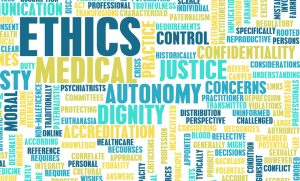
Preparing for Future Ethical Challenges in Health Care
The future of health care will bring new ethical challenges that we can’t even imagine today. It’s important for health care professionals to be ready for these challenges by staying informed and continuing their education. Being prepared will help them make the best decisions for their patients, no matter what the future holds.
Conclusion
Non-maleficence stands as a cornerstone of healthcare ethics, guiding professionals in their duty to avoid causing harm to patients. This principle has a profound influence on various aspects of medical practice, from daily patient interactions to complex research scenarios. As healthcare continues to evolve, the application of non-maleficence faces new challenges, particularly in balancing potential benefits against risks in treatment decisions.
To wrap up, non-maleficence plays a crucial role in shaping patient care, ethical decision-making, and legal standards in healthcare. Its impact extends beyond individual patient encounters to encompass broader public health concerns and medical research. As the healthcare landscape changes, it’s essential for professionals to stay informed about their ethical and legal obligations, always striving to provide safe, effective, and patient-centered care.
Are you interested in becoming a certified Health Care Ethics Consultant? The American Institute of Health Care Professionals offers an online health care ethics consulting certification program. It consists of 5 online healthcare ethics courses. They are all 100% online, based on open enrollment and are self-paced, meaning you can start whenever you’re ready and go as fast as you like or as slow as you need. For full information on the Health Care Ethics Consultant Certification program please go here.
FAQs
- What are some ways that nonmaleficence can be breached in medical practice?
Nonmaleficence can be breached through medical negligence or discrimination in healthcare. This principle requires that the benefits of any medical treatment must significantly outweigh any potential harm or discomfort to the patient.
- What guidance does nonmaleficence provide to healthcare professionals in relation to their patients?
Nonmaleficence instructs healthcare professionals to avoid causing harm to their patients. This ethical principle mandates that medical professionals carefully evaluate the potential benefits and risks of a procedure, ensuring that the former outweighs the latter.
- Why is the principle of nonmaleficence critical in healthcare settings?
Nonmaleficence is vital in healthcare because it ensures that the potential benefits of medical interventions justify any associated discomfort or pain. This principle is central to ethical decision-making in healthcare, often requiring careful consideration and administrative oversight.
- How can healthcare providers uphold the principle of non-maleficence?
Healthcare providers can uphold non-maleficence by adhering to several moral rules: not intentionally causing death, avoiding actions that cause pain or suffering, not incapacitating patients, refraining from causing offense, and not depriving individuals of life’s essential goods. These guidelines help ensure that patient harm is minimized.
- What is health care ethics?
Health care ethics are guidelines that help doctors and nurses make the right choices when treating patients. These rules ensure that patients are treated with respect and fairness.
- Why are ethical codes important in medicine?
Ethical codes are important because they help doctors and nurses make fair and just decisions. They also build trust between patients and health care providers.
- What are some common ethical dilemmas in patient care?
Common ethical dilemmas include deciding whether to respect a patient’s wishes when they refuse treatment, handling end-of-life decisions, and keeping patient information private.
- How do cultural and religious beliefs impact health care decisions?
Cultural and religious beliefs can affect how patients want to be treated. Doctors and nurses must respect these beliefs while ensuring the patient gets the best care possible.
- What role do ethics committees play in hospitals?
Ethics committees help solve tough ethical problems in hospitals. They provide advice and support to doctors and nurses facing difficult decisions.
- Why is fairness important in health care?
Fairness ensures that all patients get the care they need, regardless of their background or financial situation. It helps make sure that medical resources are used wisely and justly.
Research Articles:
“First, Do No Harm”? Non-Maleficence, Population Health, and the Ethics of Risk. Social Theory and Practice. John, S., & Wu, J. (2022). 48(3), 525–551.
Access link here
Non-maleficence and the ethics of consent to cancer screening. Elton L. Journal of Medical Ethics 2021;47:510-513.
Access link here
Moral Dilemmas Regarding Physical Restraints in Intensive Care Units: Understanding Autonomy, Beneficence, Non-Maleficence and Justice in the Use of Physical Restraints. Zhou, J., Qin, Q., Chen, S., & Zhang, H. (2024). Journal of Multidisciplinary Healthcare, 17, 1619–1627.
Access link here
Learning Analytics within Higher Education: Autonomy, Beneficence and Non-maleficence. O’Donoghue, K. J Acad Ethics 21, 125–137 (2023).
Access link here
 Written by Harry Wolf.
Written by Harry Wolf.







